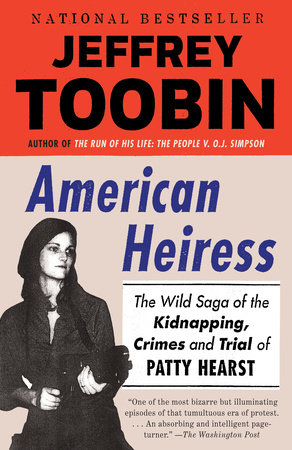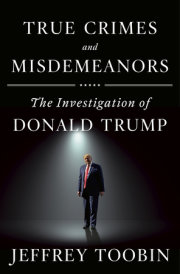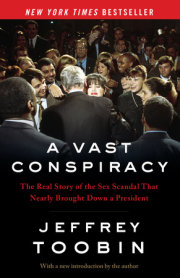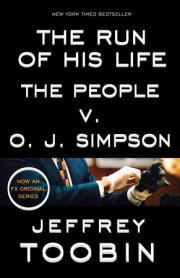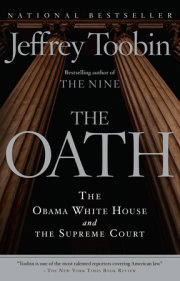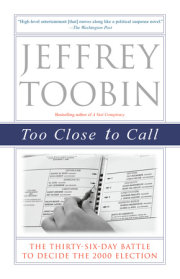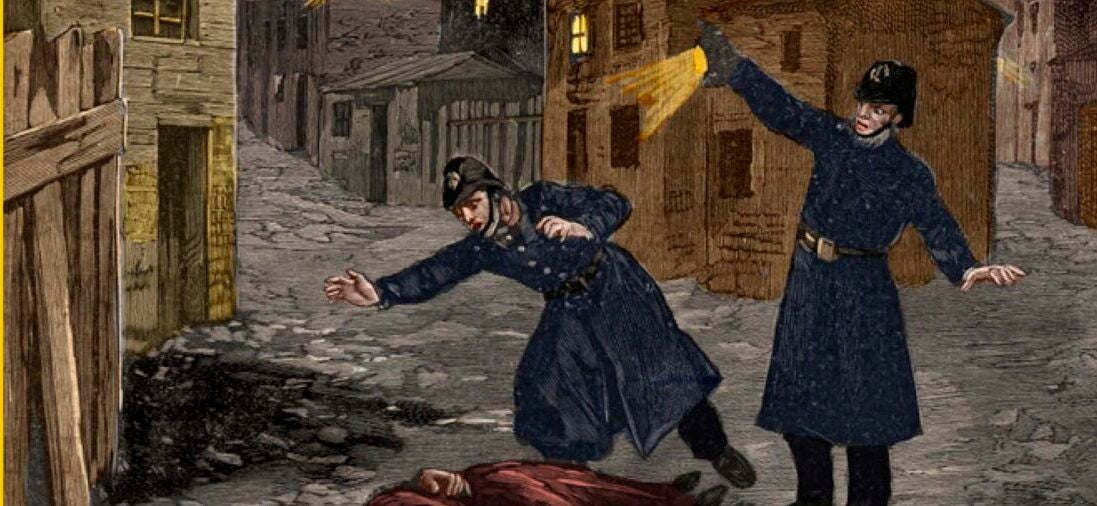Prologue The doorbell rang at 9:17 on the evening of February 4, 1974.
From their perch on the sofa in the living room, Patricia Hearst and Steven Weed looked at each other and shrugged. No one was expected. But it was Berkeley, so who knew?
Still, visitors were unlikely. Their cozy duplex was one of four apartments at 2603 Benvenue Avenue, a sturdy, well- made structure covered in the chocolate- brown shingles that were a signature of the neighborhood around the University of California, where both Patricia and Steve were students. The apartment offered an unusual degree of privacy. There was no door to the street, only a pair of garage doors, which were open. To enter, one had to walk up an outside stairway along the side and then find the entrance to apartment 4 on an interior walkway. Few did.
With some trepidation, Patricia and Steve walked to the front hall. Weed pulled open the door a crack and saw a woman he did not recognize. Her clothes appeared slightly disheveled.
“I’m sorry but I think I backed into your car,” the woman said. “I’m sorry. Can I come in and use the phone?” Patricia turned away in disgust, thinking that the visitor had damaged her beloved MG roadster. Then, as she headed back toward the living room, she heard a crash.
Three people, all bearing weapons, burst into the apartment. The woman at the door was named Angela Atwood, and she had not had a car accident. She was acting, and she was, as it happened, an actress who had recently played a leading role in a local production of Henrik Ibsen’s
Hedda Gabler. On this night, however, she was using her talents to initiate a kidnapping.
Two men rushed in behind Atwood. Later, Weed would insist that both were black, but only one was— Donald DeFreeze, who had recently applied a political filigree to a lifetime of petty and not-so-petty crime. The other man was Bill Harris, an agitated, compulsive talker, also a theater person at one time as well as a Vietnam veteran, and currently a revolutionary. DeFreeze knocked Weed to the floor, and Patricia fled toward the kitchen, in the back of the apartment.
“Where’s the safe? Where’s the safe?” DeFreeze demanded. He had an almost quaint conception that rich people kept their money at home in safes. Steve and Patricia did no such thing, and Steve protested that there was no safe. “Take my wallet,” Weed said. “It’s all the money I have. Take anything you want!” DeFreeze, unhappy with this answer, belted Steve across the head with a homemade sap— a leather- covered piece of lead. The pain knocked Weed almost unconscious.
Atwood chased Patricia into the kitchen and put a black automatic pistol in her face. “Be quiet and nobody’ll get hurt,” she said. Harris ran after Patricia as well and then dragged her back toward the front door, where he placed her facedown on the floor. Atwood began tying Patricia up. She fought back— Patricia was stronger than her delicate, barely five- foot frame suggested— but Atwood managed to get some nylon cord wrapped around her arms and legs. She also tried to put a gag (actually a racquetball) into Patricia’s mouth and a blindfold over her eyes, but her fierce resistance left both restraints hanging loosely around her head. Still, with Weed semiconscious and Hearst trussed, there was a brief moment of silence, which was broken by the arrival of a new face at the door.
Steve Suenaga, also a Cal student, lived in one of the apartments across the walkway. He was heading out to see his girlfriend, when he noticed some unusual activity inside apartment 4 and poked his nose in the door.
DeFreeze grabbed Suenaga and told him to get on the floor, facedown. Atwood tied him up, too. Suenaga heard Hearst whimpering, “Please leave us alone . . .”
“Quiet!” Harris said to her. “Or we’ll have to knock you out.”
Atwood said to DeFreeze, who seemed to be in charge, “They’ve seen us, we’ve got to kill them.”
Suenaga raised his head, and DeFreeze struck him on the head three times with his weapon— an M1 carbine converted into a machine gun.
A moment later, Weed was able to rise from his stupor. He made a wild rush at Harris, who blocked his advance with the sawed- off automatic he was carrying and slammed Weed to the ground. Weed then bolted for the back door. He pushed through the screen, busting it off its base, fled into the tiny yard, ran past his marijuana plants, vaulted the fence, and disappeared into the night. Two hostages— Hearst and Suenaga— remained tied up on the floor by the door.
Lying facedown, Patricia began to realize that she was confronting more than a robbery. These people had demanded a safe but didn’t look for one. They didn’t even take Steve’s money. What did they want? Why would mere thieves take the trouble to tie her up?
She soon found out that her fears were justified. Atwood left first for the getaway car, a 1964 Chevrolet Impala convertible that the kidnappers had carjacked earlier in the evening. (In the backseat of the car, tied up and dazed from a pistol- whipping from Atwood, was Peter Benenson, the owner of the vehicle, covered by a blanket. He had been accosted after leaving a nearby market in Berkeley.) Camilla Hall, a poet as well as a terrorist, was at the wheel of Benenson’s car, which she had backed into the driveway of 2603. The trunk was ajar, awaiting human cargo.
The commotion had started to draw attention. In the house next door, a Berkeley student named Sandy Golden and three classmates were studying for a bacteriology exam in his apartment. When they heard a woman scream, they ran onto a small porch that faced 2603. For a moment, they stared eye to eye with DeFreeze, who lifted his weapon and fired two quick bursts at the students. He missed. Atwood jumped in the passenger seat.
Harris, meanwhile, was half dragging, half carrying Patricia down the stairs along the side of the building toward the waiting car. She was kicking, screaming, and wearing nothing but a bathrobe, a pair of panties, and fuzzy blue slippers. Harris raised the trunk with one hand, but it bounced up and slammed shut. He groaned in frustration. He now had to put Patricia down and retrieve the key from Camilla Hall, in the driver’s seat. While Harris went for the key, Hearst . . . disappeared. The kidnap victim had wiggled free from her bonds, for Atwood’s training for the stage had yielded few insights about knot tying. After a few panicked seconds, Harris located Hearst, who had scampered into the garage, near her own MG. Harris again lifted her up and this time managed to deposit her in the trunk and close the lid on top of her.
Then, for Patricia Hearst, chaos yielded quickly to darkness and silence.
And cold. The temperature in Berkeley had dropped into the forties, and she had only her bathrobe for warmth in the trunk. A trunk? What was she doing there? What did they want? Why was this happening?
In a way, she already knew: it was because of her name. It is difficult, at a remove of several decades, to conjure what the name Hearst still meant in 1974. Fame, wealth, and power on a grand scale. Her grandfather William Randolph Hearst (who died several years before Patricia was born in 1954) was a newspaper publisher, but that barely captures the scope of his renown. The Chief, as he was known, built the grandest private residence in the United States, San Simeon, and his life inspired perhaps the greatest American film,
Citizen Kane.
Patricia was just nineteen, restless and unformed, the product of a lonely childhood in a big wealthy family. She was the middle child of five daughters, the rambunctious one, the one the governess (that was the term the family used) disciplined with a hairbrush. She was sent off to boarding school when she was only ten and was in and out of five schools before she graduated from high school. She was never exactly expelled— Hearsts were not expelled— but it was suggested that she would be happier elsewhere, especially by the nuns who ran the Catholic institutions chosen by her mother. Mrs. Hearst was displeased, often.
Catherine Campbell Hearst was a regal presence, as austere as the limestone mansion in Hillsborough where she and Randolph Apperson Hearst presided. In temperament, she differed greatly from her husband. Catherine was tightly wound, a stickler for proprieties, a Georgia beauty who persuaded Randy to make a kind of halfhearted conversion to Catholicism. In contrast, Randy liked nothing so much as a long day in a duck blind followed by a big meal fueled by scotch and red wine. He was a businessman of sorts, the publisher of the family’s flagship newspaper, the
San Francisco Examiner, but his role there was mostly that of a figurehead. Still, Randy possessed a kind of journalistic curiosity about how the rest of the world lived. Patty was his favorite; he related to her spunk and moxie as well as to her aversion to formal education. And she, in turn, loved her dad and allowed him to call her Patty without complaint. For others, she preferred Patricia. As for the Hearst name or her family’s history, Patricia had little interest. She made a point of never seeing
Citizen Kane.
Her final high school had been the Crystal Springs School for Girls, in Hillsborough, which aspired to be a finishing school in the mode of Madeira or Miss Porter’s, where the daughters of the San Francisco elite would prepare graduates for a women’s college and, more important, for marriage. But by the early 1970s, the turmoil of the era had penetrated the manicured hedges of Crystal Springs, and the girls there began wanting something more than the lives of their mothers. Some wanted careers. Patricia wanted Steve. After graduating from Princeton, Steve Weed took a job teaching math at Crystal Springs, and his shaggy good looks generated more than academic interest among the girls in his classes. Patricia began driving her MG to his apartment for, she said, extra help with her geometry homework. They began sleeping together right around her seventeenth birthday. Steve was twenty- three.
Patricia accumulated enough credits during her peripatetic education to graduate from Crystal Springs after the eleventh grade. A year at a local junior college followed. When she told her parents she was staying with girlfriends, she was actually spending most of her nights at Steve’s. Upon her return from a long trip to Europe, she announced to Randy and Catherine that she would be moving in with Steve. Her mother wanted Patricia to enroll at Stanford, which was more socially prominent, but Patricia preferred the University of California at Berkeley, where Steve had started graduate school in philosophy.
There, abruptly, the fun stopped for Patricia, even if few people knew the depth of her despair. In those days, as always, she spoke in a kind of lock-jawed monotone that gave away little of what she was feeling. That fall, in their first days together in the apartment, Patricia pinned her hope for happiness on an actual marriage, or at least an engagement, and she hinted that she expected a ring. (In the manner of most unmarried couples who lived together in those days, they felt compelled to sign the lease as “Mr. and Mrs. Steven Weed.”) In time, Patricia got a ring— sort of. For Christmas, in 1973, Steve gave her a pair of moccasins and a piece of paper with the word “ring” written on it, as a kind of promissory note. Hardly a romantic gesture. Steve thought Patricia was sarcastic. Patricia thought Steve was condescending. (Both were right.) Patricia enrolled as a sophomore at the university, and when she told Steve she was thinking of becoming a veterinarian, he informed her that she could never master the math and science requirements. She chose art history instead.
Reluctantly, Patricia lapsed into the life of a proto- housewife. She bought furniture and crammed every surface with knickknacks— little vases, ceramic shoes and bunnies, glass jars with stoppers, tiny sculptures. Tasteful prints, mostly Impressionist, lined the walls. (Patricia’s mother, in a forlorn nod to Catholicism for a daughter living in sin, gave the couple a sixteenth- century stations of the cross bas- relief.) Above their bed, on the second floor, in an oval frame, was the photograph of the couple that had run in the newspaper to announce their engagement. The decor matched their lifestyle— middle- aged. (Still, in a couple of ways, their tastes did reflect those of their generation. By the front door, there was a rack of their favorite wine, called Romance, which retailed for ninetynine cents a bottle, and they always maintained a generous stash of pot, which Steve also tried to grow in the garage as well as in the backyard.)
Patricia cooked and cleaned; Steve did neither. They did everything, including have sex, on his schedule, not hers. Patricia made the beds or left them unmade, as she did on February 4. Their evening together on that occasion was typical. Dinner was chicken soup with tuna fish sandwiches, followed by
Mission: Impossible on television, then schoolwork in silence on the downstairs sofa. Bathrobe and slippers had become her home uniform. At nineteen,
this was her life? On the eve of her kidnapping, Patricia later acknowledged, she was “mildly suicidal.”
Now, incredibly, those fuzzy slippers were evidence of her struggle to escape from Bill Harris. Police photographers would note the presence of one on the stairway and the other on the driveway. And where was Steve, the man of the house? Her fiancé? Her protector? He had run away. “Take anything you want!” Steve had told the kidnappers, and indeed they had. They had taken Patricia Campbell Hearst, and now she was locked in the trunk of a car.
The kidnappers brought three vehicles to 2603 Benvenue that night. There was the stolen convertible with Hall at the wheel, along with the kidnap team of Atwood, Harris, and DeFreeze; one hostage, Benenson, was in the backseat, and the other, Hearst, was in the trunk. Emily Harris (Bill’s wife) and Nancy Ling Perry parked a stolen station wagon parallel to the front of Hearst’s apartment. A sometime sex worker turned terrorist, Ling (as she was known) was volatile even by the standards of her colleagues; when she saw DeFreeze firing at the students on the porch next door, Ling stuck her automatic weapon out the window of her car and shot two quick bursts at them as well. She also missed. Waiting on the other side of Benvenue, facing 2603, was a blue Volkswagen Beetle driven by Willy Wolfe, the youngest in the group and the least experienced criminal. He was joined by Patricia Soltysik, known to all as Mizmoon, the name given to her by her occasional lover the poet Camilla Hall. The plan was for Wolfe to lead a three- car caravan away from the scene, followed by Hall driving the kidnap vehicle and Emily Harris and Nancy Ling Perry in the rear.
The plan nearly failed at the outset. Wolfe made a left onto Parker Street, with the two other cars following close behind. Suddenly a Berkeley police cruiser appeared from nowhere and flashed its lights at the Volkswagen. The officer walked slowly to the driver’s side to talk to Wolfe.
Were they caught? The kidnapping itself was over quickly, but the gunfire prompted several calls to the police.
DeFreeze and Harris, with automatic weapons splayed across their laps in the Chevy, faced a moment of decision. With eyebrows more than words, they asked each other, could we waste a cop? If the officer was questioning Wolfe about the kidnapping, it was only a matter of minutes until the whole plan unraveled. The only way to protect their mission— their “action,” in the military argot they favored— was to kill the cop right now. DeFreeze was a killer, as he had proven just a few weeks earlier. But Harris was bigger on talk than violence; in Vietnam, he’d never even removed the rifle from beneath his bunk. But that was then. In unspoken accord, DeFreeze and Harris prepared to open their doors and turn their guns on the officer who was questioning their comrade.
Just then, DeFreeze and Harris saw the police officer walk away from Wolfe’s window, return to his vehicle, and drive away. Later, they learned that the officer had only stopped the Volkswagen to tell Wolfe to turn on his lights.
And so the three cars headed off into a future that was nearly as mysterious to the captors as to their captive. There were just eight of them— Donald DeFreeze, Bill and Emily Harris, Angela Atwood, Camilla Hall, Nancy Ling Perry, Mizmoon Soltysik, and Willy Wolfe— but they called themselves an army, the Symbionese Liberation Army. As they drove off into the California night, with Patricia Hearst as their unwilling passenger, their unofficial motto might well have been “What now?”
Excerpted from
AMERICAN HEIRESS: The Wild Saga of the Kidnapping, Crimes and Trial of Patty Hearst by Jeffrey Toobin. Copyright © 2016 by Jeffrey Toobin. Excerpted by permission of Doubleday, a division of Penguin Random House
Copyright © 2016 by Jeffrey Toobin. All rights reserved. No part of this excerpt may be reproduced or reprinted without permission in writing from the publisher.





